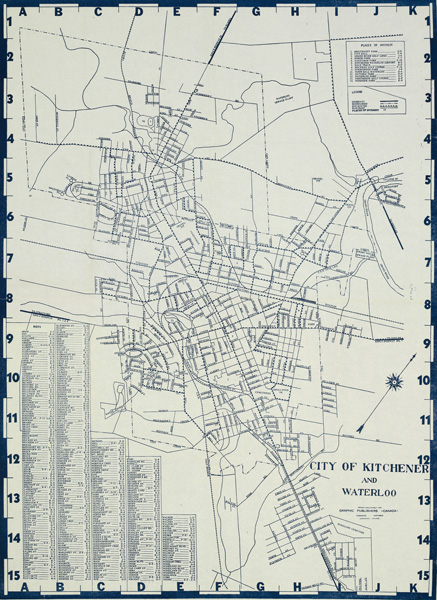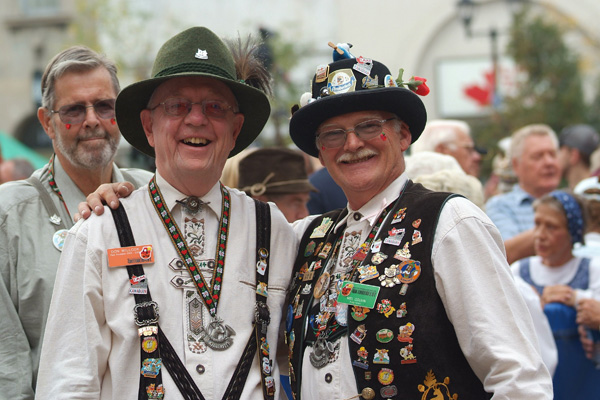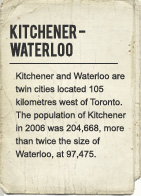Kitchener and Waterloo are twin cities located 105 kilometres west of Toronto. The population of Kitchener in 2006 was 204,668, more than twice the size of Waterloo, at 97,475. Although they have grown together physically over the years and are now contiguous, each city retains its own identity and independent municipal government.
The land on which both cities are built was designated by the British Crown in 1784 as a reserve for the Six Nations. This land was subdivided and a part was sold in 1805 to Mennonites from Pennsylvania. From the 1820s to the 1870s, many German-speaking immigrants from Europe settled in the area. They named their hamlet Berlin, in honour of their German heritage. Berlin became known as Canada’s German capital, but when the First World War broke out, the city confronted outside hostility over its cultural distinctiveness. A plebiscite in 1916 determined that the city would be renamed after the British secretary of war, Lord Horatio H. Kitchener.
Industry in each community expanded steadily. By 1835 Waterloo had three breweries, the large Granite Mills and Distillery (which would become the Seagram’s distillery), and several metal foundries. Berlin (Kitchener) had a foundry, button factories and meat processing came in the 1890s with the founding of the J. M. Schneider Ltd. meat company. Both communities were key centres in the furniture and leather industries, a sign of the unique skills the German craftsmen brought there.
Early on, Waterloo was home to two Christian colleges, St. Jerome’s (Catholic), founded in 1865, and the Evangelical Lutheran Seminary of Canada, founded in 1911. From these institutions, two major universities – the University of Waterloo and Waterloo Lutheran University (later Wilfred Laurier University) – were established in the late 1950s and early 1960s. These were joined by Kitchener’s Conestoga College in 1967. Waterloo is also a major centre for the insurance industry and has an active high-tech and research industry, largely fuelled by the world-renowned computer science, engineering and mathematics programs at the University of Waterloo.
The celebration of German identity was introduced to the twin cities in the 1970s in an annual Oktoberfest festival, which has become a national tourist attraction. Since that time, other ethnic groups – Poles, Greeks, Portuguese, Italians, Chinese, West Indians, Serbs, Croatians and British, among many others – have created a new population mixture that makes the two cities a prime expression of Canada’s multiculturalism.










